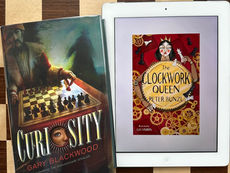

Dec 23, 20257 min read


Dec 18, 20253 min read


Dec 10, 20255 min read


Dec 4, 20253 min read


Nov 26, 20259 min read


Nov 20, 20254 min read


Nov 12, 20256 min read


Nov 6, 20256 min read


Oct 30, 20256 min read


Oct 24, 20255 min read


Oct 17, 20253 min read


Oct 9, 20254 min read


Oct 2, 20256 min read


Sep 26, 20255 min read


Sep 17, 20251 min read


Sep 12, 20255 min read


Sep 4, 20253 min read


Aug 28, 20254 min read


Aug 21, 20253 min read


Aug 14, 20254 min read


Aug 7, 20254 min read


Jul 23, 20254 min read


Jul 19, 20252 min read


Jul 11, 20255 min read